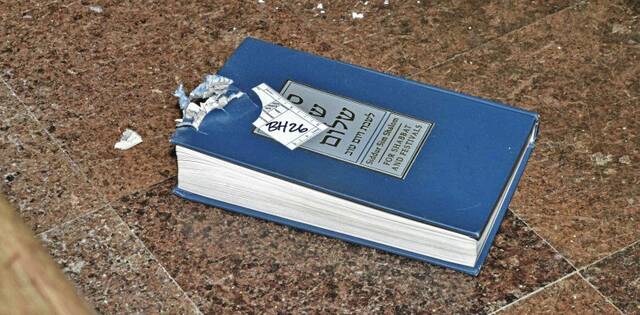Lori Falce: Synagogue shooting trial spotlights a horror that hasn't changed
Everyone sees terrible things every day.
We just see them from a safe distance.
We see people die in horror movies in ways that make you question the sanity of the person who wrote the script. Television serves up the kind of fictional crime dramas that are a staple of prime-time entertainment. Video games let you be a first-person participant in a fantasy world in which the only repercussion is losing.
But the “ripped from the headlines” episodes with dramatic music and special effects makeup don’t prepare you for reality.
This week, the story of the Pittsburgh synagogue shooting began to be told in a way that it has not been over the past five years.
Journalists have tried. We recounted the crime reports and the accounts of people close to the scene. We were there in Squirrel Hill that day and told you what we saw and heard. We attended news conferences and asked questions and did our best.
But then there are the gut-wrenching stories that unfolded on the witness stand during the federal trial of Robert Bowers, 50, of Baldwin, the man charged with the deadliest antisemitic attack in U.S. history.
Tree of Life Rabbi Jeffrey Myers recounted 40 minutes hiding in a bathroom, clutching the doorknob and his cellphone. He prayed, believing he was about to die. He was torn between staying on the phone with the 911 operator and hanging up to have what might have been a last chance to speak with his wife.
Shannon Basa-Sabol was not in the synagogue that also was home to the Dor Hadash and New Light congregations. She was far away, connected by phone. She was there for Bernice Simon, pleading for husband Sylvan to get up. The recordings of their calls were played in court.
“I’m scared to death. I think he might be dead,” Simon said, her fears all for the man she married in that very chapel 62 years earlier.
Basa-Sabol was on the phone with Bernice Simon when she was shot. At 10:03 a.m., she described hearing “agonal breathing,” the kind of desperate attempts to get air that can come for minutes before death.
Eleven people died that Oct. 27, 2018, morning. Dan Leger thought he would be one of them. A palliative care nurse, he knew what death looked like and diagnosed it in himself. He was surprised when the person who came up to him was a medic, not the shooter.
“This one’s alive.”
Martin Gaynor escaped, but he carried physical evidence of the horror. His arm carried a blue line from gunpowder clawing across his skin. Doctors call it a traumatic tattoo. He had it removed.
Carol Black told the court about the last time she saw her brother, Richard Gottfried, who entered the synagogue before her while she finished a phone call in her car. The sounds she heard inside made no sense. Why was someone lying on the steps?
She didn’t immediately think of gunfire and death. Who would think that at a house of worship? Gunfire is for war zones and action movies. It had no business in a place with prayer shawls and yarmulkes.
These are the stories of just two days of a trial expected to take weeks. They are the refractions of grief, fear and loss, and they are just the beginning.
This is what gun violence and hatred can do — and the most terrible thing of all is that it doesn’t stop.
After the Pittsburgh synagogue shooting came the Thousand Oaks, Calif., bar shooting; the Virginia Beach shooting; the Gilroy Garlic Festival shooting; the El Paso, Texas, Walmart; the Dayton, Ohio, shooting. Odessa, Boulder, Indianapolis, San Jose, Buffalo, Uvalde, Chattanooga, Charlottesville, Colorado Springs, Nashville, Louisville and so very many more.
We all see terrible things too often. When will it be enough to do something about it?
Lori Falce is the Tribune-Review community engagement editor and an opinion columnist. For more than 30 years, she has covered Pennsylvania politics, Penn State, crime and communities. She joined the Trib in 2018. She can be reached at lfalce@triblive.com.
Remove the ads from your TribLIVE reading experience but still support the journalists who create the content with TribLIVE Ad-Free.

